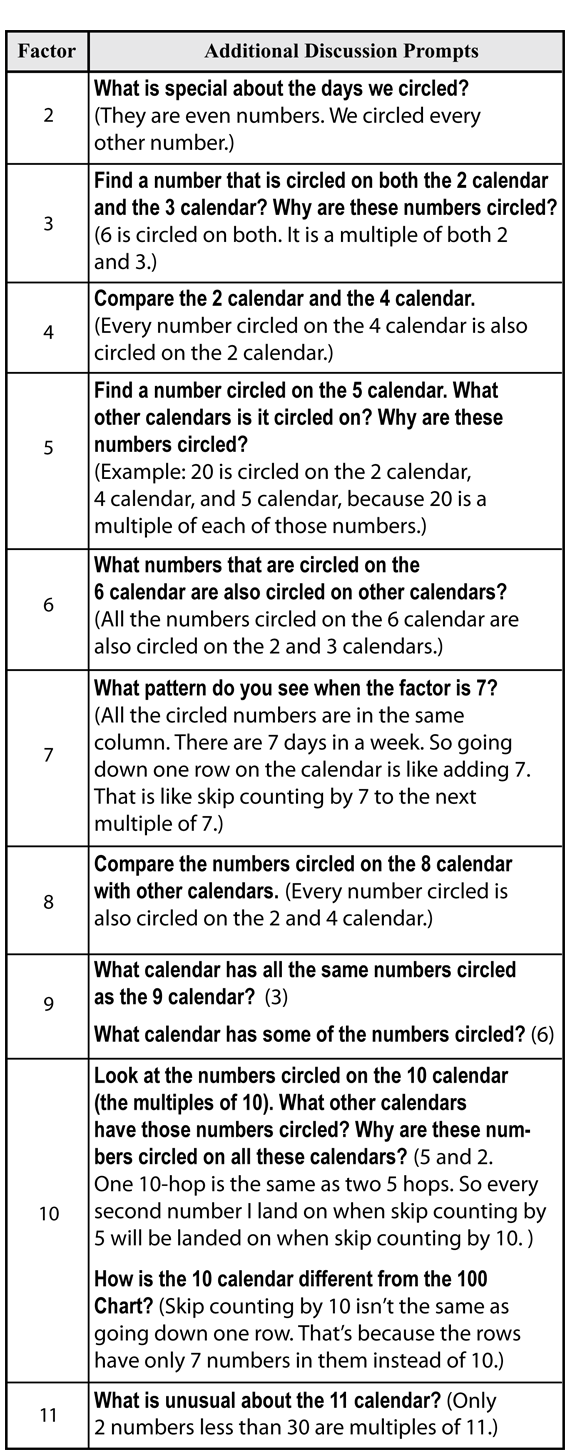Multiples on the Calendar
Est. Class Sessions: 1Summarizing the Lesson
Incorporate this activity into your daily routine. One way to do this is to start the day by asking students how the date can be displayed using a number sentence with the factor of the month. The factor of the month should tell “how many” in each group for all the days of the month. For example, if 5 is the factor assigned for December, students might write 2 × 5 + 1 = 11 for December 11 because eleven can be organized into 2 groups of 5 with one leftover. At the start of each week you can also record the number sentences for the weekend dates or for any other days of non-attendance. These number sentences can then be recorded on your large calendar for that month. Alternatively, students may complete each day's number sentences independently as part of a morning routine, as a warm-up at the start of the math class, or as a center activity. You can use the large monthly calendar to help students check their progress and discuss patterns.
Describe Patterns in Multiples. As you continue to add to the calendars, patterns will gradually emerge.
Ask some of the following questions from time to time, as appropriate:
If the date is a multiple of this month's factor, ask:
If the date is not a multiple of this month's factor, ask:
Post a copy of each month's calendar as they are completed. Use the discussion prompts displayed in Figure 5 to compare calendars.












